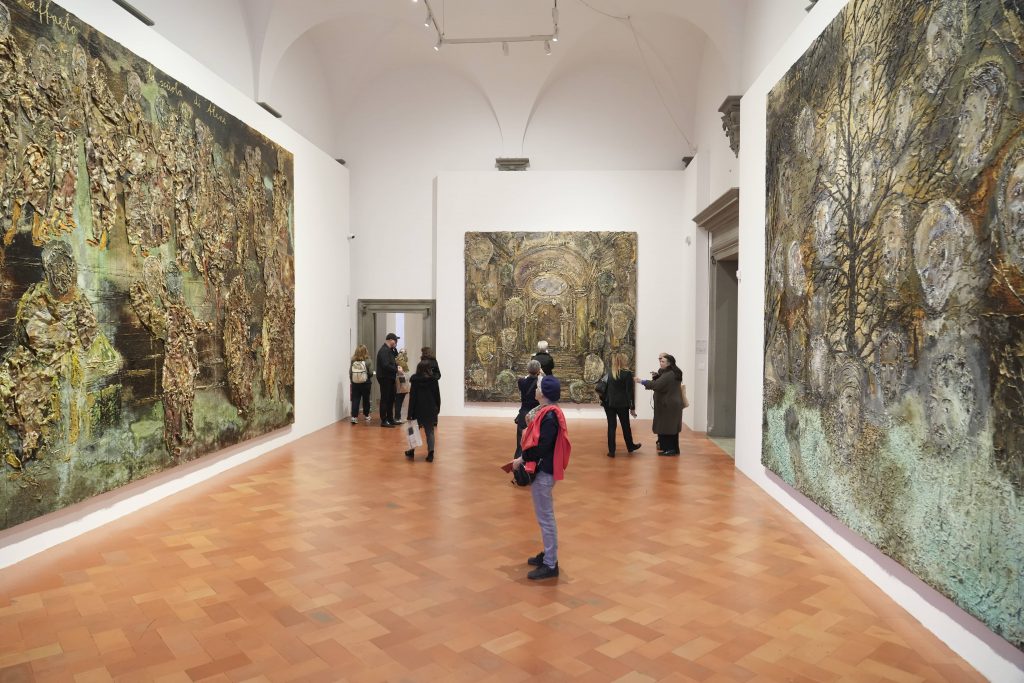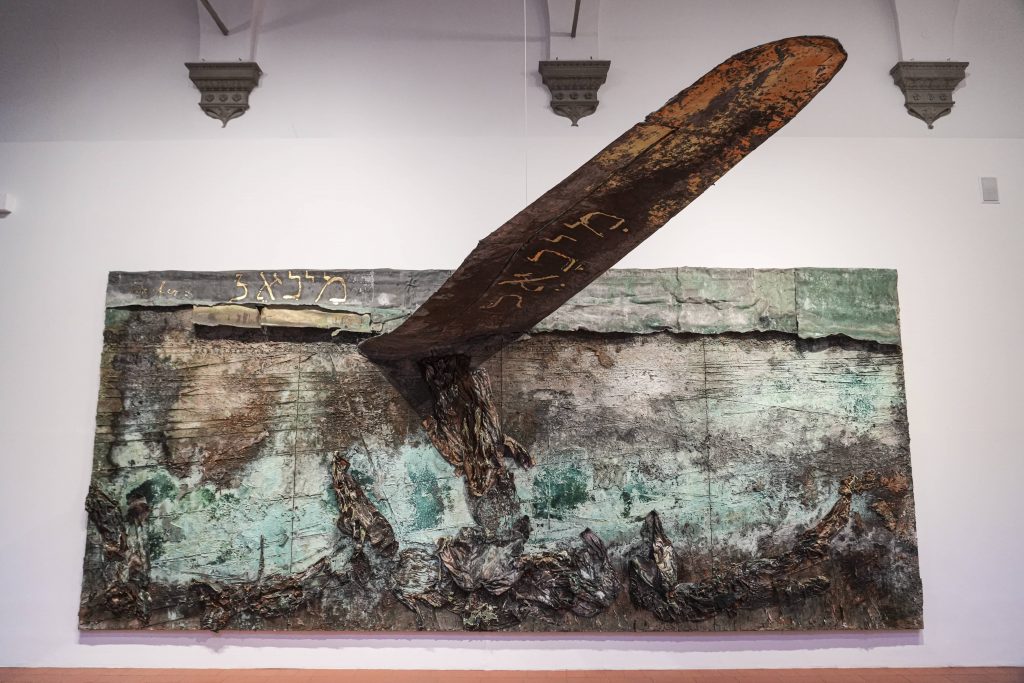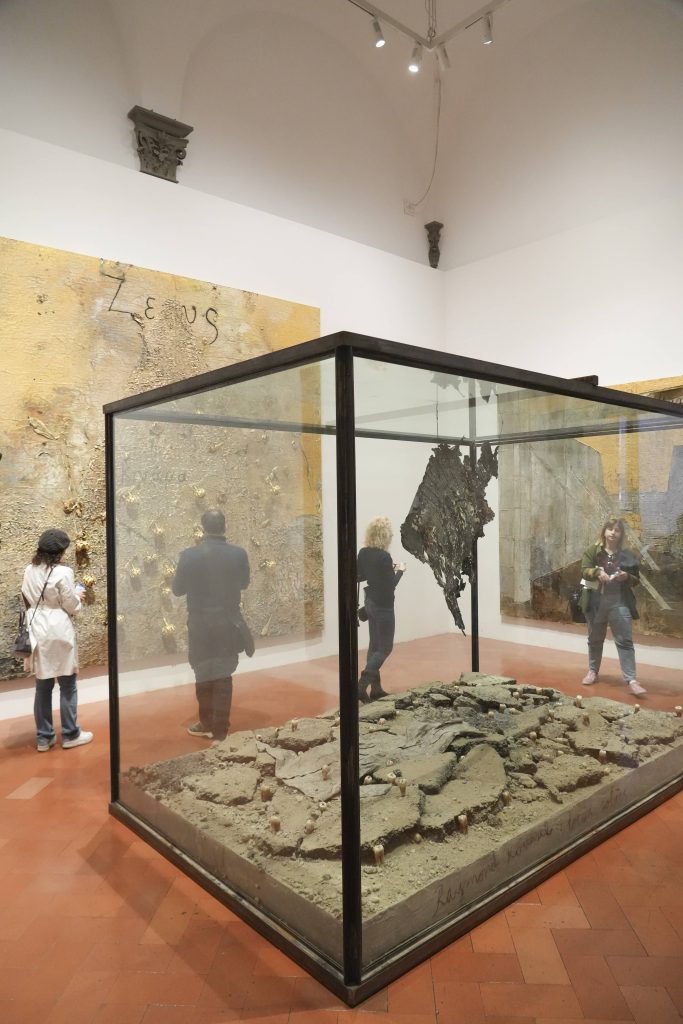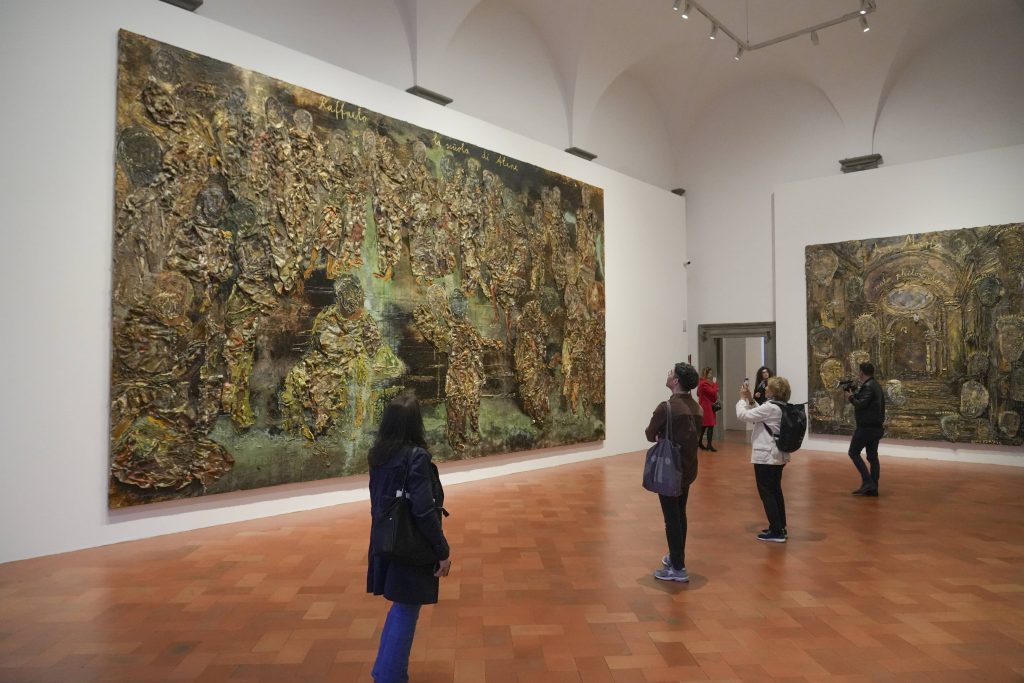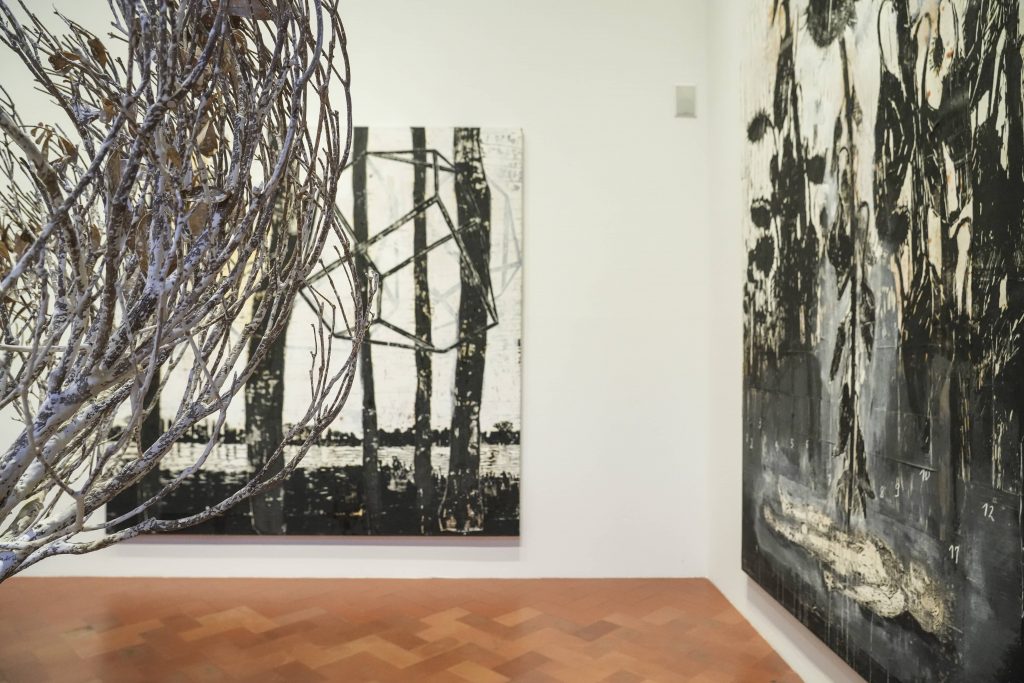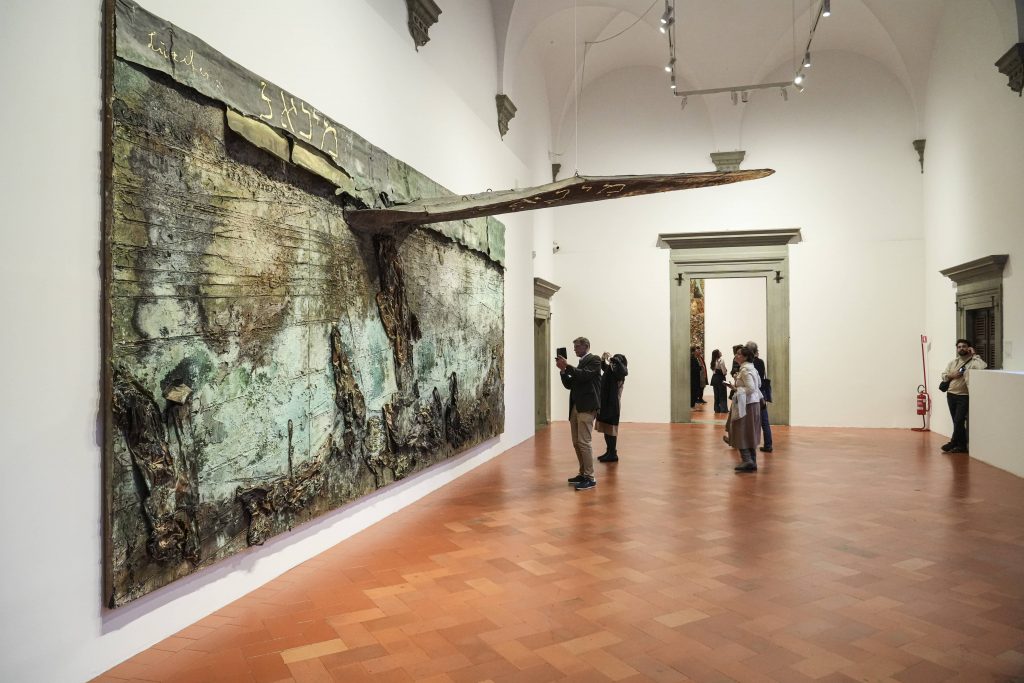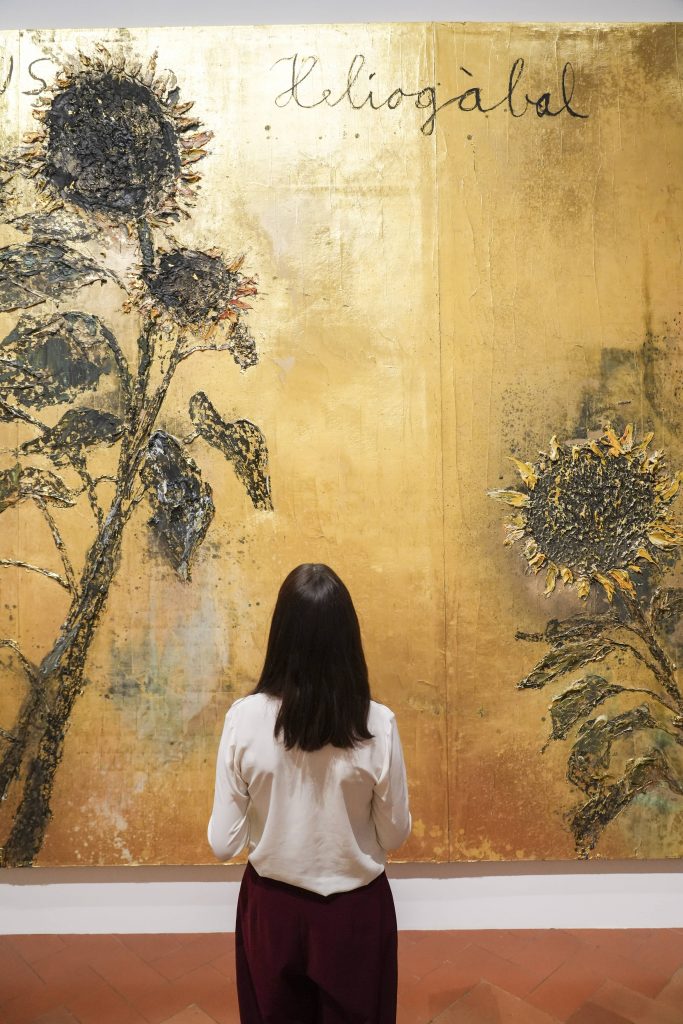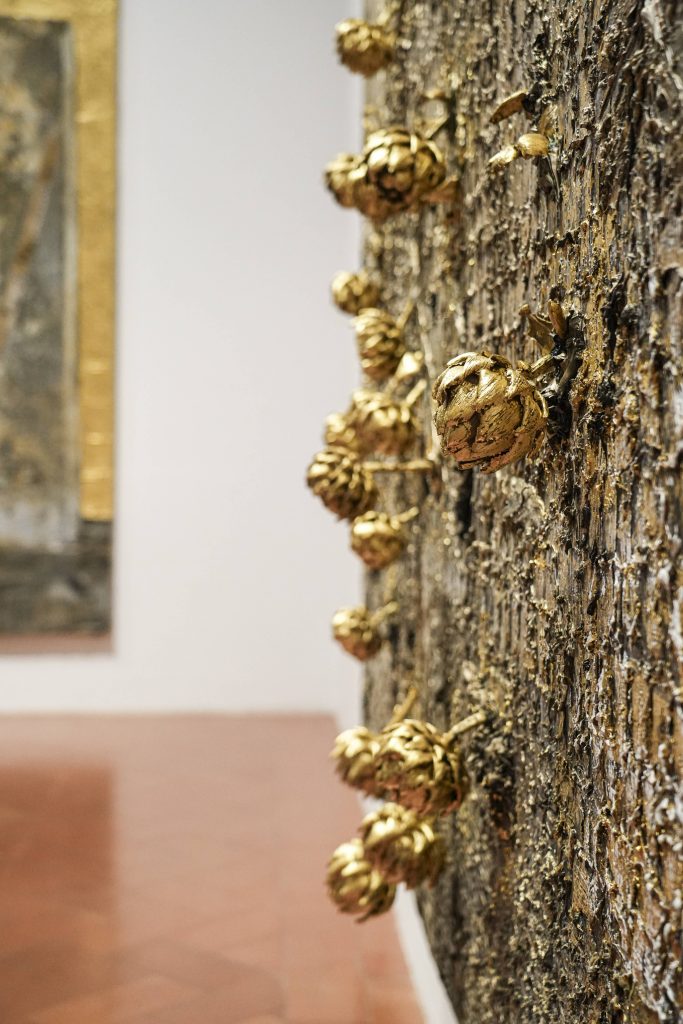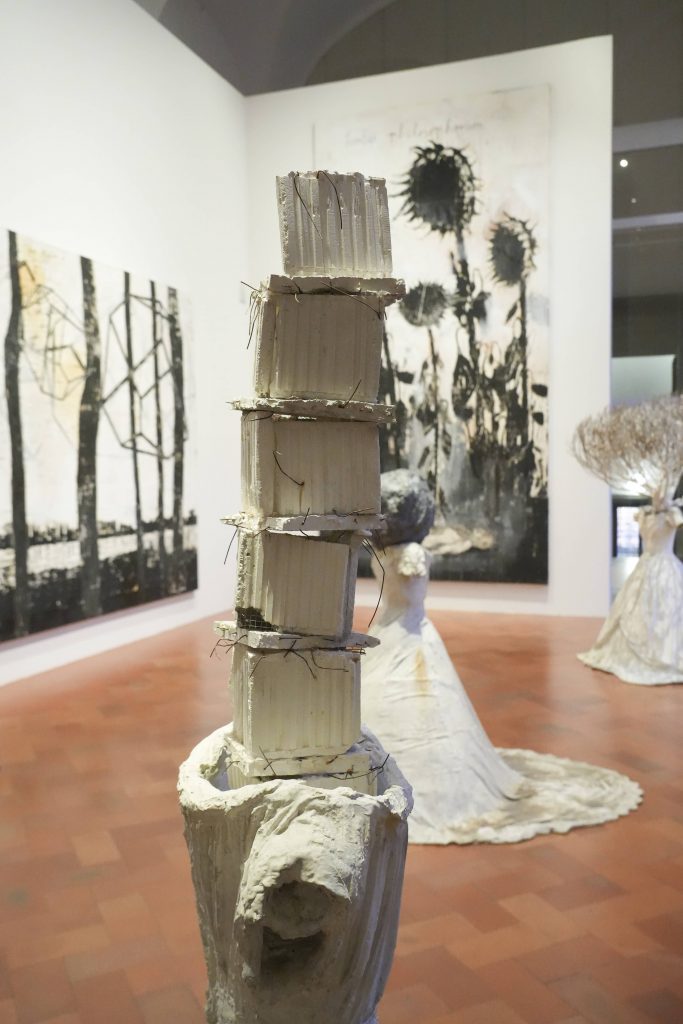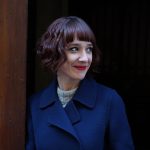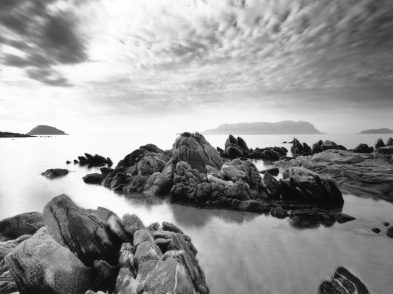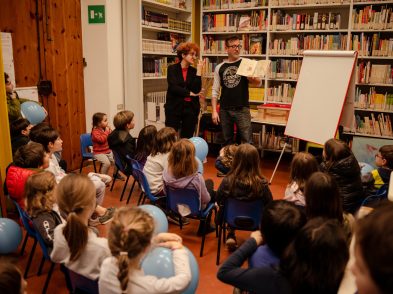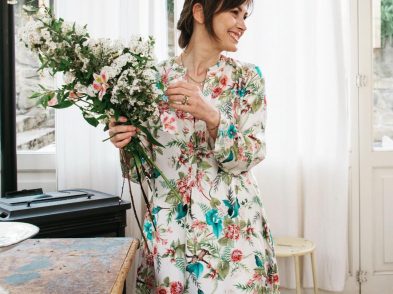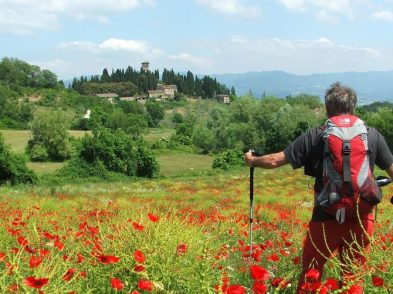Palazzo Strozzi’s latest exhibition always draws a crowd, but the many bodies are quickly rendered insignificant in comparison to the large-scale monumental works that occupy each room. Anselm Kiefer’s Fallen Angels, on display from March 22 until July 21, may leave visitors feeling overwhelmed on reemerging into the spring sunlight, but that is rather inevitable with the myriad references to religion, literature, philosophy, memory and war intended to stagger the senses and prompt reflection through the paintings, sculptures, installations and photography on display.
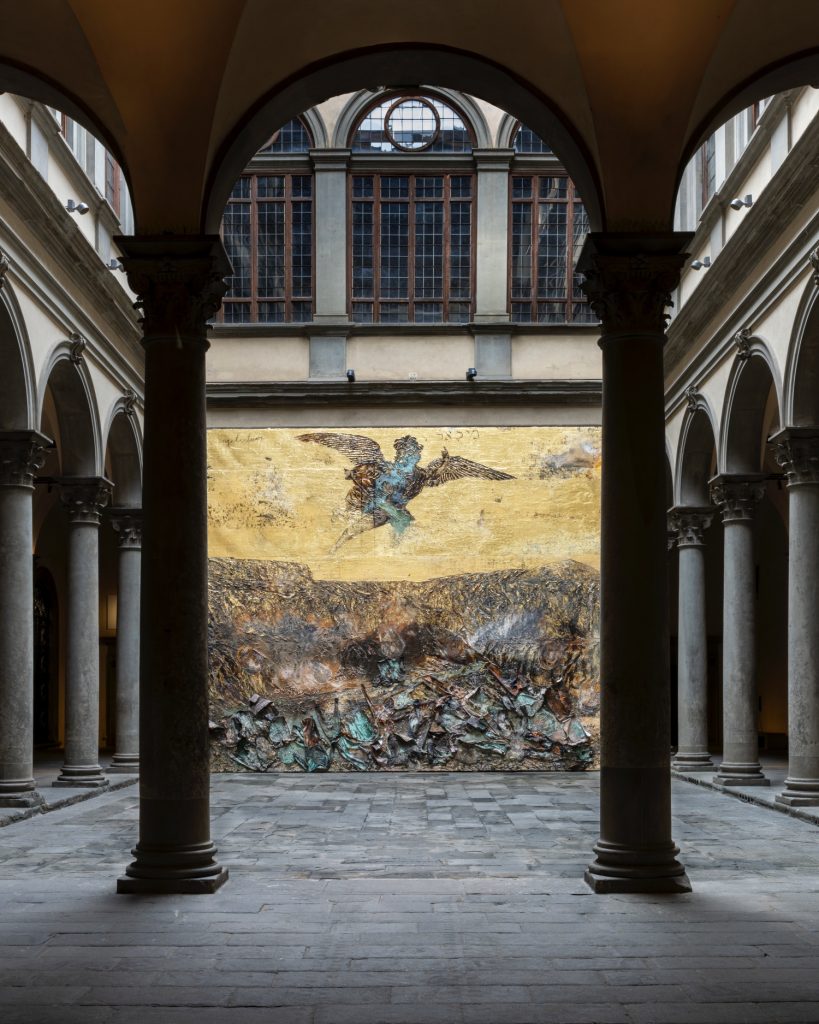
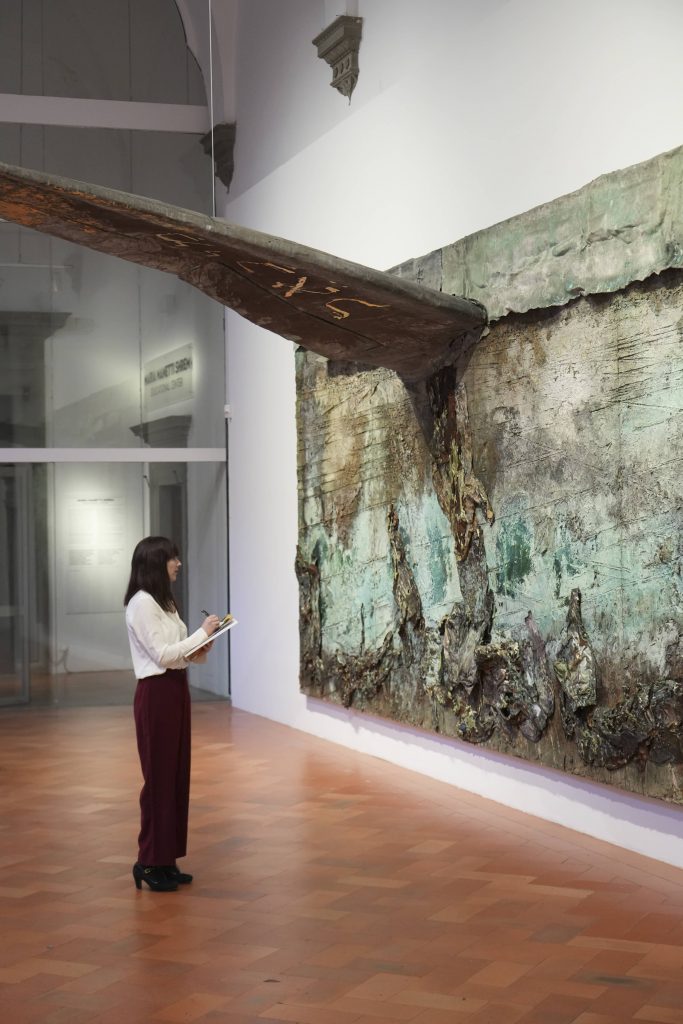
We are first introduced to the exhibition by the German-born, Paris-based artist with the gigantic Engelssturz in the courtyard, rising as an angel falls in our direction, or at least seems to do so, given that the three-dimensional qualities afforded by the dense stratification add an element of trickery as we move around the piece. Based on the Book of Revelation and the creation of original sin, the Fall of the Angel stands at seven metres high, with a gold background reminiscent of Gothic polyptychs. Out of the seemingly chaotic mixture of materials, modern garments stand out in a contemplation on the struggle between Good and Evil, inspired by Luca Giordano’s Expulsion of the Rebel Angels.
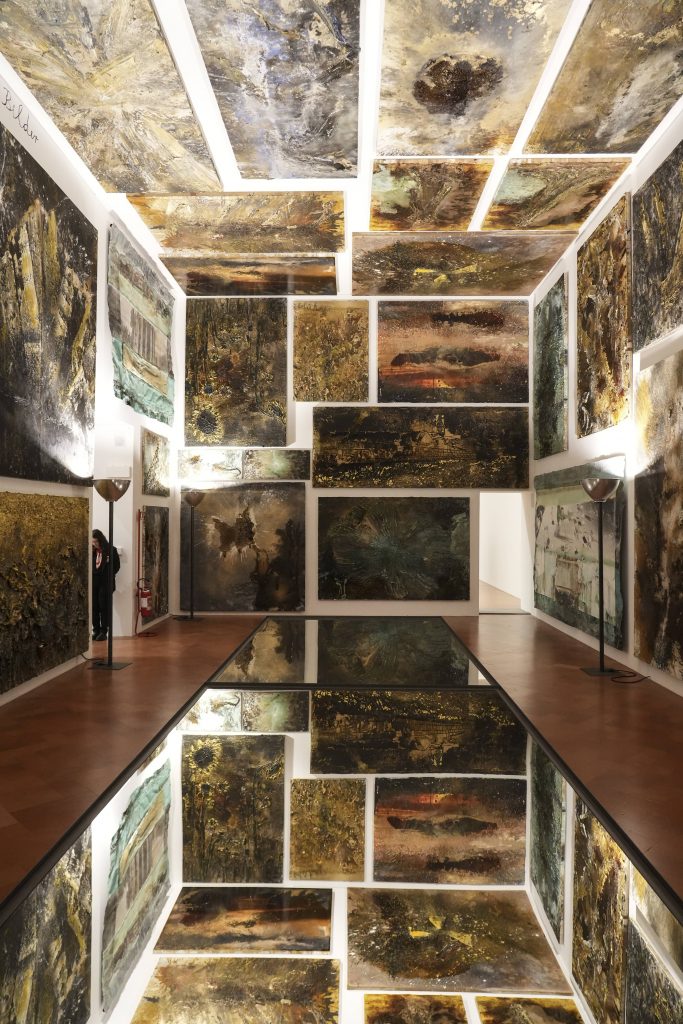
The immersive installation titled Verstrahlte Bilder (Irradiated Paintings, 1983-2023) is a captivating collection of 60 paintings covering the walls and the ceiling, while a vast mirror covers the centre of the floor, reflecting the images of destruction, ruin and decay right back at us like a haunting and melancholy hole into hell that threatens to suck you in once you dare to stare into it. “I feel dizzy,” says the journalist to my left, looking in and then quickly stepping back, while others are evidently less affected, moving closer like Narcissus before returning upright as if having glimpsed an unspeakable horror.
The last room features photographs from the famous Besetzungen (Occupations) series, depicting the artist dressed in a Wehrmacht uniform, inherited from his father, with his right hand raised in a parody of the Nazi salute. The uncomfortable works (the artist never veers from taboo and controversy) were created as part of Kiefer’s final university exam, declaring that “it would either merit the highest grade or nothing at all”.
Curated by Arturo Galansino, general director of Fondazione Palazzo Strozzi, the catalogue features an interview with the artist that illuminates further. “Destruction is part of the creative process. I place my paintings outside: I submerge them in baths of electrolysis.” Sunflowers and snakes are common motifs across the 25 works, with falling figures often featured as stark images of the downfall of humanity, expressed through materials like straw, ash, clay, lead, shellac, terracotta, and steel wire. The precariousness of life and the transience of time are harsh reminders of the murkiness of the human condition, with the exhibition closing on a few verses by the Italian poet Salvatore Quasimodo, traced on a wall of the room: “Everyone stands alone at the heart of the world / pierced by a ray of sunlight / and suddenly it’s evening”. While this may all seem rather depressing, Kiefer maintains that he “believe[s] in hope, not as an anticipation of something that might happen, but as an entirely novel concept that eludes description. Pessimists dwell on the past, optimists look forward to the future, but I harbor no desires; I am open.”
To answer the question of whether pre-reading is required to “get” these works or whether they are open to personal interpretation, Kiefer provides this solution: “Either approach is acceptable…However, it’s essential for people to observe and begin to contemplate.”

